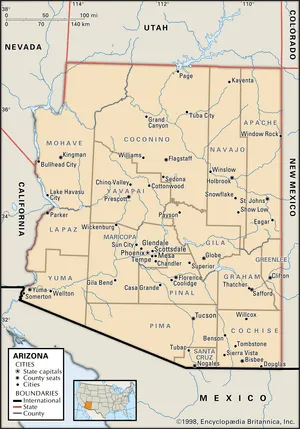Arizona, the land of vast deserts and majestic canyons, is not only famous for its magnificent natural landscapes but also a place that preserves the long-standing cultural heritage of Native American tribes. Their handicrafts are an integral part of Arizona’s cultural identity, reflecting creativity, skillful techniques, and a deep connection with nature. From intricate woven baskets to unique pottery and splendid jewelry, each piece tells a story of the history, traditions, and spiritual life of the people here.
This article will take you on a journey to discover the unique handicrafts of Arizona’s Native Americans, from traditional crafting techniques to the profound cultural meanings hidden in each product.
Basket Weaving: Timeless Cultural Essence
Basket weaving is one of the oldest and most important forms of handicraft among Arizona’s Native Americans. Since ancient times, baskets have not only been essential items in daily life but also symbols of ingenuity, patience, and community cohesion.

The Havasupai, Hopi, Navajo, and Tohono O’odham tribes are renowned for their masterful basket weaving techniques. They utilize natural materials such as grasses, palm, bark, and roots to create baskets of various shapes, sizes, and patterns. Each motif on the basket carries a unique symbolic meaning, representing the connection to nature, beliefs, and the history of the tribe.
Traditional basket weaving techniques require meticulousness, skill, and experience passed down through generations. Artisans must gather, process materials, use natural dyes, and weave them together carefully to create durable and culturally valuable products.
Today, basket weaving is not only a traditional craft but also a cherished art form. The exquisite woven baskets of Arizona Native Americans are displayed in museums, galleries, and sought after by collectors worldwide.
Pottery: Telling History Through Fired Earth
Pottery is a significant part of the cultural heritage of Arizona’s Native Americans. From simple water jars to intricate works of art, pottery not only serves daily needs but also acts as a medium to convey historical narratives, beliefs, and the worldview of the indigenous people.

The Hopi, Zuni, and other tribes in Arizona have a long-standing pottery tradition. They use local clay, hand-knead it, and fire it in wood-burning kilns to create unique ceramic products.
A distinctive feature of Arizona Native American pottery is the sophisticated decorative patterns. These patterns are often hand-painted using natural pigments, drawing inspiration from nature, animals, spiritual figures, and significant historical events. Each motif carries a unique symbolic meaning, telling a story or conveying a message.
Today, the art of pottery making is still maintained and developed in many Native American communities in Arizona. Pottery artists not only continue to produce traditional items but also create new designs, combining classic techniques with modern styles.
Jewelry: Symbols of Beauty and Spirit
Jewelry plays a vital role in the culture of Arizona’s Native Americans. More than just ornamentation, jewelry symbolizes social status, beliefs, and the connection to the natural world.

The Navajo and Zuni tribes are famous for their silver and turquoise jewelry making artistry. They use sophisticated handcrafting techniques to create necklaces, bracelets, rings, earrings, and hair ornaments with unique patterns and profound symbolic meanings.
Silver and turquoise are the two main materials used in Arizona Native American jewelry. Silver represents purity, strength, and power, while turquoise is considered a symbol of the sky, water, and prosperity.
The patterns on jewelry often draw inspiration from nature, animals, spiritual figures, and legends. Each motif has its own meaning, representing the connection between humans and the natural world, as well as the cultural and spiritual values of the tribe.
Today, Arizona Native American jewelry is not only loved by indigenous people but also sought after by tourists and art enthusiasts worldwide. These unique pieces of jewelry are not just ornaments but also a part of Arizona’s cultural heritage, bearing the imprint of the creativity, skill, and spirit of Native Americans.
Preservation and Promotion: Challenges and Opportunities
The handicrafts of Arizona Native Americans are a priceless cultural heritage that needs to be preserved and promoted for future generations. However, maintaining and developing these traditional crafts faces many challenges.
One of the biggest challenges is the decline in the number of skilled artisans. Due to the influence of modern life, many young people are no longer interested in learning and inheriting the traditional crafts of their ancestors.
In addition, accessing markets and finding outlets for products is also a difficult problem. Handicraft artisans often face difficulties in competing with cheap industrial products and imported handicrafts.
To preserve and promote the handicrafts of Arizona Native Americans, the joint efforts of the government, non-governmental organizations, local communities, and artisans are needed.
- Support for training and apprenticeship: There is a need for training and apprenticeship programs to encourage young people to learn and inherit traditional crafts.
- Financial and technical support: Financial resources are needed to help artisans purchase materials, equipment, and improve production skills.
- Brand building and product promotion: Promotion campaigns are needed to introduce Arizona Native American handicrafts to domestic and international markets.
- Protection of intellectual property rights: Legal measures are needed to protect the intellectual property rights of artisans and prevent the copying and counterfeiting of products.
By joining hands to preserve and promote the handicrafts of Arizona Native Americans, we not only preserve a priceless cultural heritage but also contribute to creating economic and social opportunities for local communities.
Conclusion
Discovering the handicrafts of Arizona Native Americans is a fascinating and meaningful journey. Each handicraft product is not just a work of art but also a story about the history, culture, and spirit of the indigenous people.
Preserving and promoting the handicrafts of Arizona Native Americans is the responsibility of all of us. By supporting artisans, purchasing handicrafts, and learning about Native American culture, we can contribute to preserving a priceless cultural heritage for future generations.